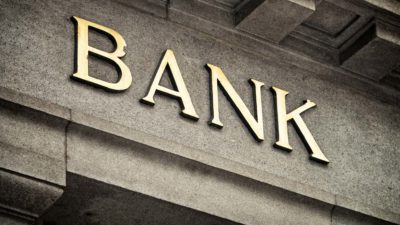The Big 4 ASX bank shares are in the green amid a sea of red washing through the market on Thursday.
At the time of writing, the S&P/ASX 200 Financials Index (ASX: XFJ) is up 0.34%. The ASX financial sector is the only one of the 11 market sectors in the green today.
Meantime, the S&P/ASX 200 Index (ASX: XJO) is down 0.35% and the S&P/ASX All Ordinaries Index (ASX: XAO) is down 0.34%.
Big 4 bank shares higher on Thursday
Here's how the Big 4 ASX bank shares are performing today:
- The National Australia Bank Ltd (ASX: NAB) share price is $37.98, up 0.74%
- The Westpac Banking Corp (ASX: WBC) share price is $30.99, up 0.52%
- The Commonwealth Bank of Australia (ASX: CBA) share price is $139.07, up 0.36%
- The ANZ Group Holdings Ltd (ASX: ANZ) share price is $29.98, up 0.2%
None of the Big 4 ASX bank shares have any price-sensitive company news driving them higher today.
The Big 4 bank shares have had an extraordinary run of price growth since November 2023, as the following chart shows.
Many analysts now see the stocks as overvalued.
One of them is Goldman Sachs. The broker has a sell rating on CBA and Westpac shares, a neutral rating on NAB shares, and a buy rating on ANZ shares.
While its ratings are mixed, the broker's 12-month price targets on the Big 4 bank shares are lower than the current prices of the stocks.
- Price target of $34.24 on NAB shares
- Price target of $25.84 on Westpac shares
- Price target of $94.80 on CBA shares
- Price target of $29.45 on ANZ shares
Another broker that says bank stocks are overcooked is Macquarie Group. It has an underperform rating on all of the Big 4 bank shares.
Here are Macquarie's 12-month price targets for the banks:
- Price target of $32.50 on NAB shares
- Price target of $26 on Westpac shares
- Price target of $95 on CBA shares
- Price target of $26.50 on ANZ shares
Experts explain why the Big 4 are trading high
The portfolio managers of Blackwattle's Large Cap Quality Fund, Ray David and Joe Koh, say Australia's bank shares are outperforming the ASX 200 and many global peers for two unique reasons.
They are: optimism that bad debts will stay at cyclically low levels, and ongoing share buybacks.
David and Koh say:
While bad debt levels in Australia are minimal, savings rates have plummeted, and credit card debt is growing again. For bad debts to remain at cyclical lows, interest rate reductions will be needed, or earnings are likely to come under pressure.
That said, skyrocketing Australian house prices continue to provide mortgage holders with a buffer and an ever-growing source of wealth, thanks to record migration and a housing undersupply.









